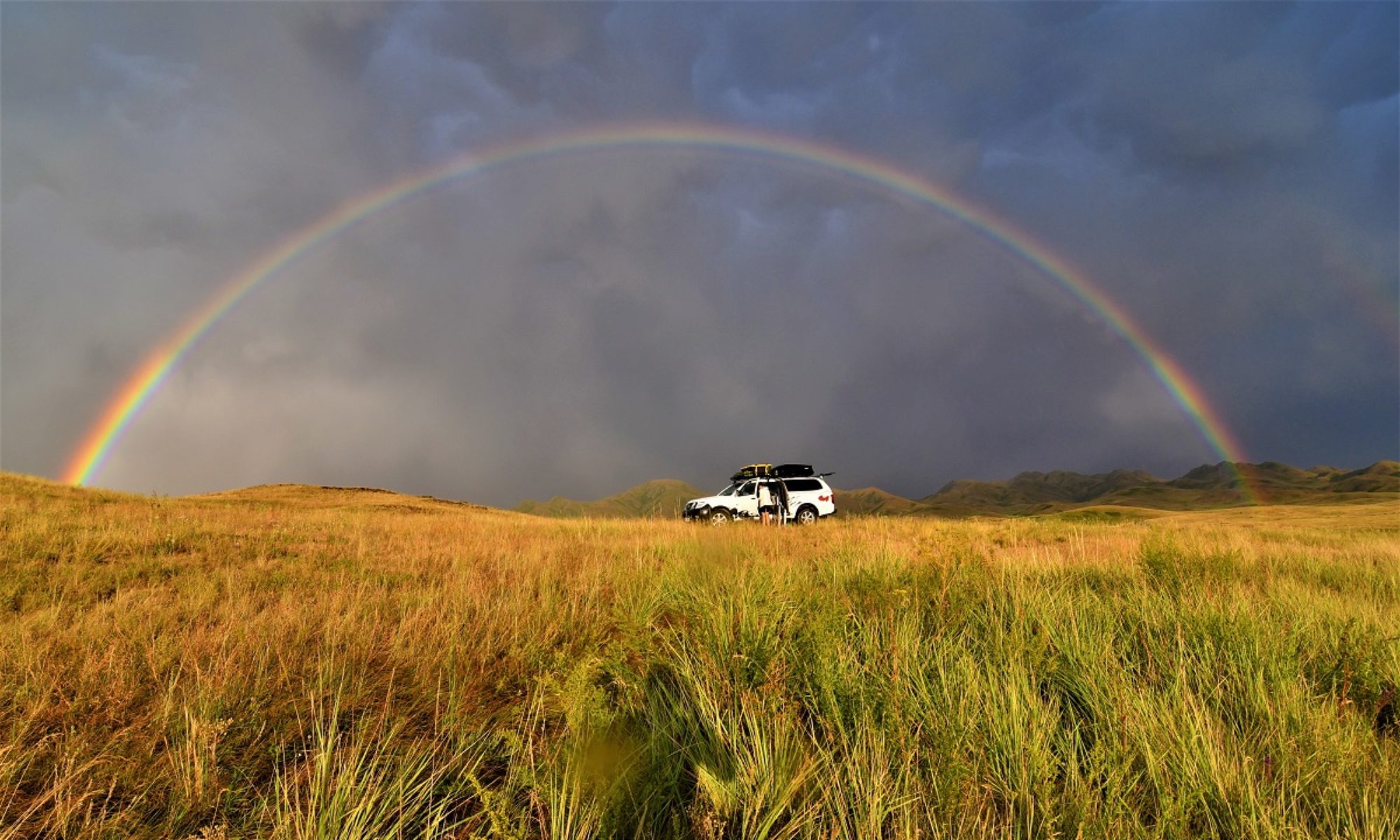Sunday 17th November, 2019 – Cameron Highlands
We stopped for lunch in Kuala Lipis, a small town on the way to the Cameron Highlands. Most shops were closed as it was Sunday but we were drawn to a food stall doing brisk business selling BBQ chicken (almost like indian chicken tikka) served with plain rice. It smelt and tasted delicious!
The Cameron Highlands is a scenic hill station which dates from the 19th century. The highlands were founded by a British colonialist named Sir William Cameron and were named after him, and were modeled on a traditional English village. Temperatures in these 1300m to 1829m heights rarely top 30°C and the aim was to provide residents in the lowlands with some respite during the summer months and allow them to enjoy the cooler climate here. ( It was noticeably cooler, no more than 20 C when we were there and as it is the rainy season we had heavy downpours too!)
One of the big draws here is the chance to go strawberry picking. In keeping with its British history, you can stay in traditional style colonial buildings here as well as enjoy typical treats such as English cream teas ! The region is known for its sweeping tea plantations. You can visit the Boh Tea Plantation where you can enjoy the lush green terraces and learn how the tea is harvested and grown. The Boh Tea Company was founded in 1929 and is one of the most famous brands of tea in Malaysia.
Monday 18th November, 2019 – Gunung Brinchang- Tanah Rata
The weather was not so good but decided to go to the ” Mossy Forest” anyway. The access is from a narrow road going through tea plantations initially but then twisting all the way to a high point on the way to Gunung Bringchang. There is a board walk at the top but, by then, we were in the clouds so gave it a miss.
We drove back to Tanah Rata, one of the major centers of Cameron Highlands. The scenery could be nice but it is blighted by a forest of plastic green houses covering large surfaces of the hills all along the valley. The local economy relies heavily on the revenue from this greenhouse farming ( fruit, vegetable and flowers) but it spoils the landscape completely. The only highlight was the tea plantations.
Tuesday 19th November, 2019 – Pangkor Island
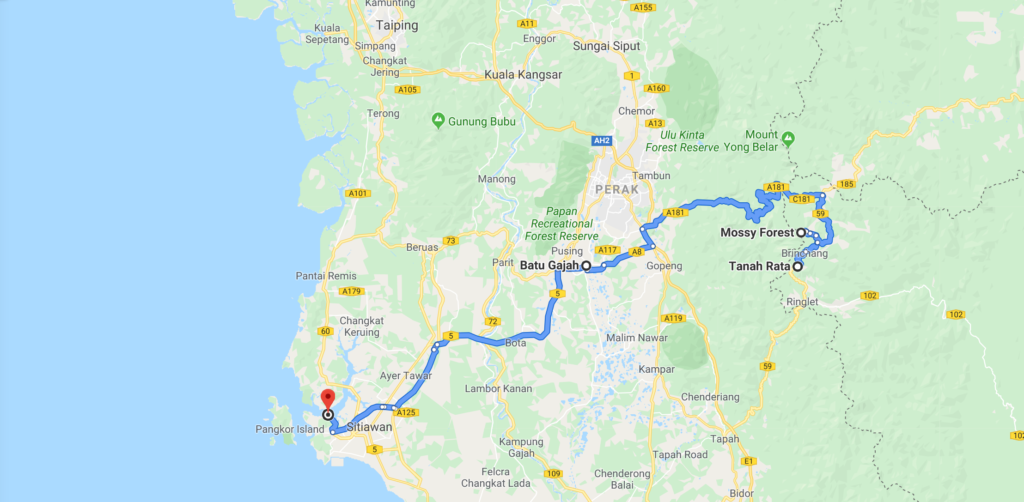
Pangkor Island lies 15mn by ferry ( pedestrian only) from the west coast. It is essentially a destination for local tourists. We spent a couple of hours on the beach before returning to the mainland. We saw some hornbills, Malaysia’s national bird.
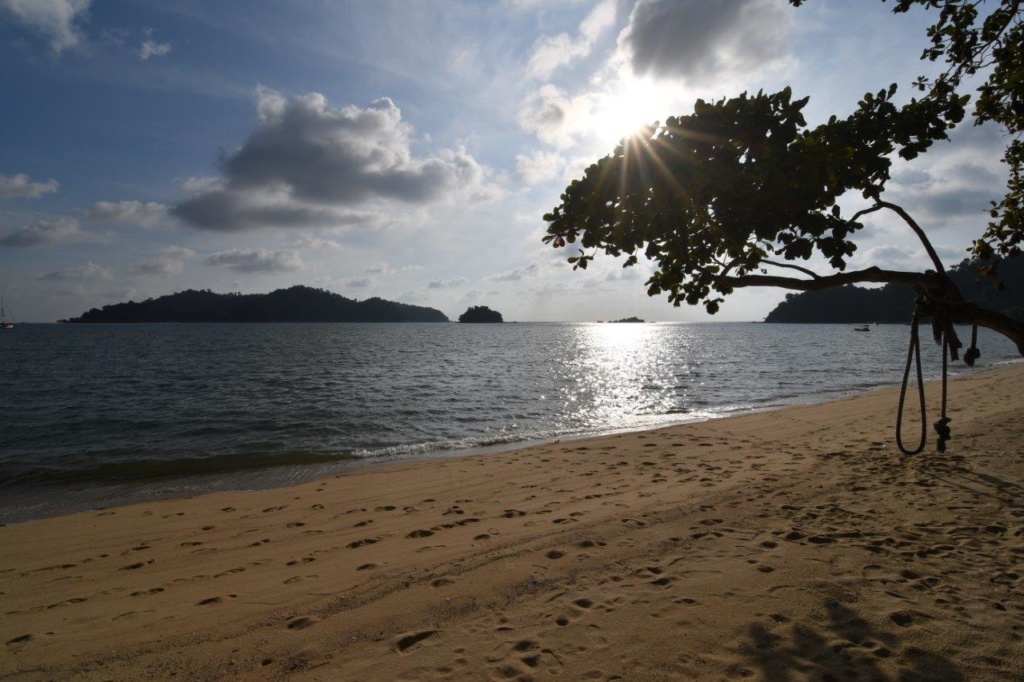
Pangkor Island 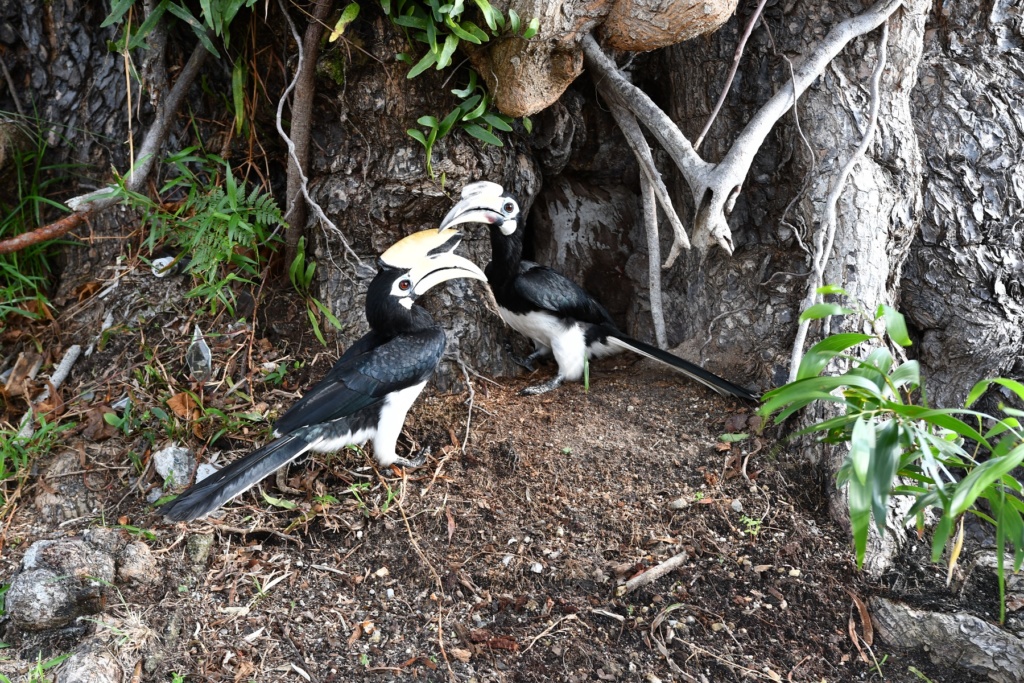
Hornbill 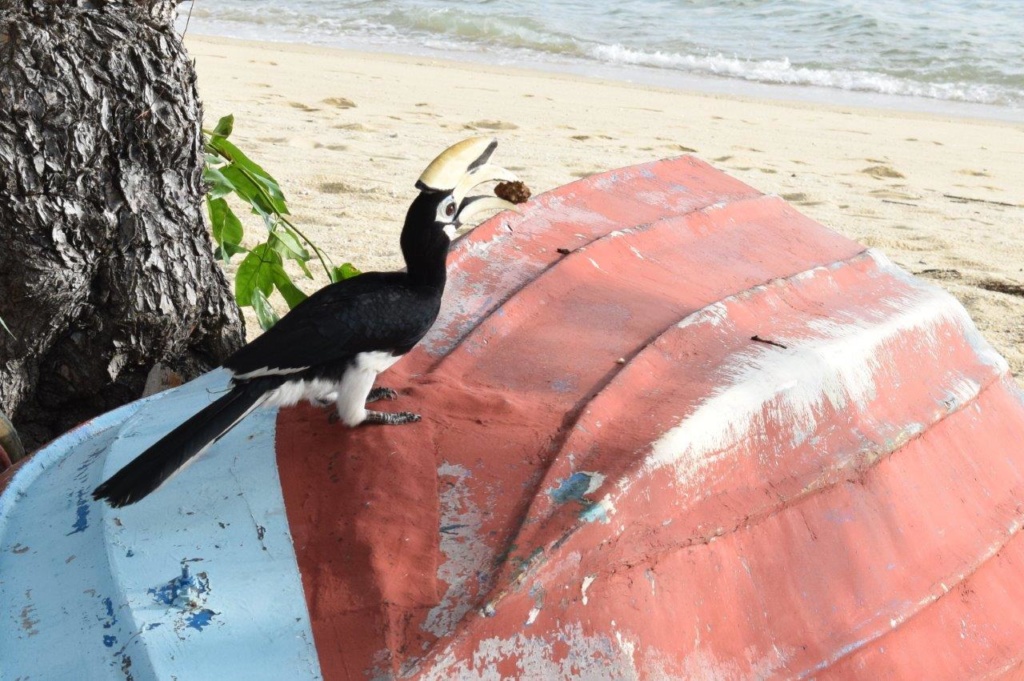
Hornbill
Wednesday 20th November, 2019- Thursday 21st November, 2019 – Georgetown
Georgetown is Penang Island’s capital city and one of the most interesting and colourful cities in Malaysia. Named after King George III, walking down the streets of Georgetown is like walking through the paths of history. It was listed as a World Heritage Site by UNESCO in July 2008.
Penang is reputed to have the best street food in Malaysia and there are plenty of hawkers to sample and buy from. The food reflects the multicultural heritage and you can choose from Malay, Chinese, Thai, Indian and European dishes.
The Peranakans , descendants of the first chinese settlers ( from the southern provinces) also referrred to as Baba-Nyonya played an important role in Penang’s history but also in part of southern Thailand and in what is now Singapore. They were usually traders, the middleman of the British and the Chinese, or the Chinese and Malays, or vice versa because they were mostly English educated. Their ability to speak 2 or 3 languages also helped to cement their position. Some became extremely rich and today some of their mansions have been converted to museums where you can learn about their customs, their opulent lifestyle etc…
We visited the Peranakan Mansion. This was the residence and office of a 19th-century Chinese tycoon, Chung Keng Quee. . The rooms are furnished with rosewood and mother of pearl engraved furniture, often over decorated. The more interesting part are a couple of galleries dedicated to traditional clothes, wedding attire, beaded slippers and jewellry. The Peranakan retained most of their ethnic and religious origins (such as ancestor worship), but assimilated the language and culture of the Malays. The Nyonya’s clothing, Baju Panjang (Long Dress) was adapted from the native Malay’s Baju Kurung. It is worn with a batiksarong (batik wrap-around skirt) and 3 kerosang (brooches). Peranakan beaded slippers called Kasot Manek were hand-made with much skill and patience: strung, beaded and sewn onto canvas with tiny faceted glass cut beads (known as Manek Potong) from Bohemia.
The Chinese heritage is felt throughout the city with several interesting temples and the Clan Jetties. Billed as one of the last bastions of old Chinese settlements on the island, this waterfront society is home to houses on stilts of various Chinese clans. Today six jetties remain, each named after a Chinese clan.
Initially, the area where the Clan Jetties now lie was a wood yard littered with planks and firewood. After the construction of the Quay in 1882, the waterfront was developed with short public landing stages or jetties. Settlements grew on these foundations and they were used for the loading and unloading of goods and for the mooring of sampans (boats). Gradually, each jetty became identified and dominated by certain clans and over time more huts sprung up. Due to constant rivalry over access and monopoly of work consignments, relationships between the clans were very antagonistic and often led to bitter fights and disputes.
We wondered through the old part of town and admired the colonial type houses, some in desperate need of attention. There is an important street art scene in Georgetown ( in the Banksy style) and the most popular pictures are amongst the favourite photo opportunities for tourists !
On our last day in town, we walk past a shop selling durian cakes and we decided to give them a try. ( more about durian fruit below). There, we met Ignatius and his wife, originally from Indonesia but living in the States. We got talking and after a while, they invited us to go and try “chinese bird’s nest” in another shop they knew about.
Chinese bird nest is one of the most expensive foods in the world, with a price of up to $2000 per kilogram (according to Wikipedia). The nests are made of the hardened saliva of the male swiftlet, a type of swallow found in many coastal caves of Southeast Asia. Sounds weird, but the cooked nest is almost tasteless and has the texture of jelly. It is often served sweetened and has quite a refreshing taste. We had custard tarts with birdnest topping, osmanthus jelly with bird nest and coconut jelly with bird nest ( served in a coconut of course! ). We also had chrysanthemum tea, a popular summer drink in south east Asia. All with a subtile taste and very refreshing. Thank you Ignatius and Ina for the lovely time spent with you. (Ina, sorry if I have your name wrong…)
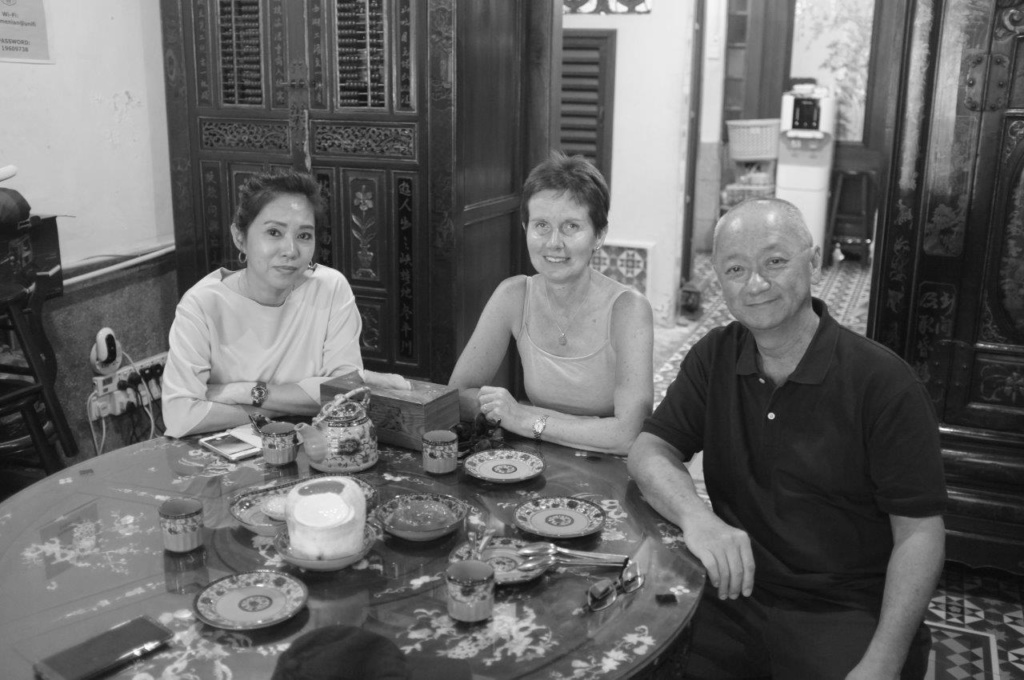
Ignatius and Ina 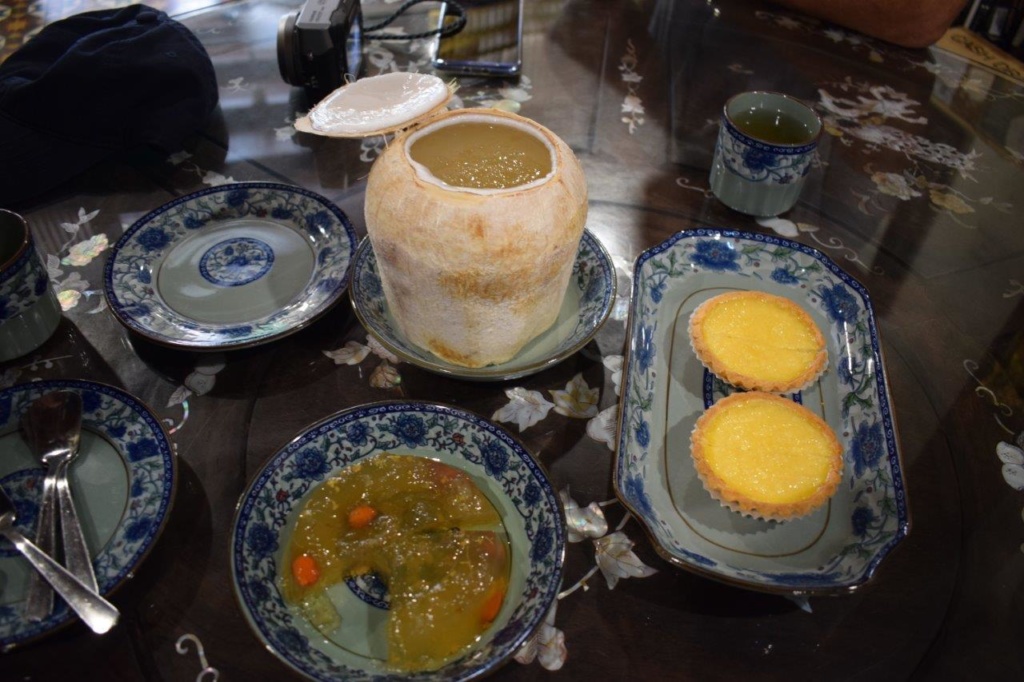
bird nest feast
Durian
The durian fruit is popular in Southeast Asia, where it’s nicknamed “the king of fruits.” However, it also gets a bad rap due to its strong smell. The flavor is described as tasting like cheese, almonds, garlic, and caramel all at once. The smell is so potent that the fruit is banned in many hotels and public transport systems in Southeast Asia. Durian is used in sweet and savory dishes.
Friday 22nd November, 2019. Thailand
